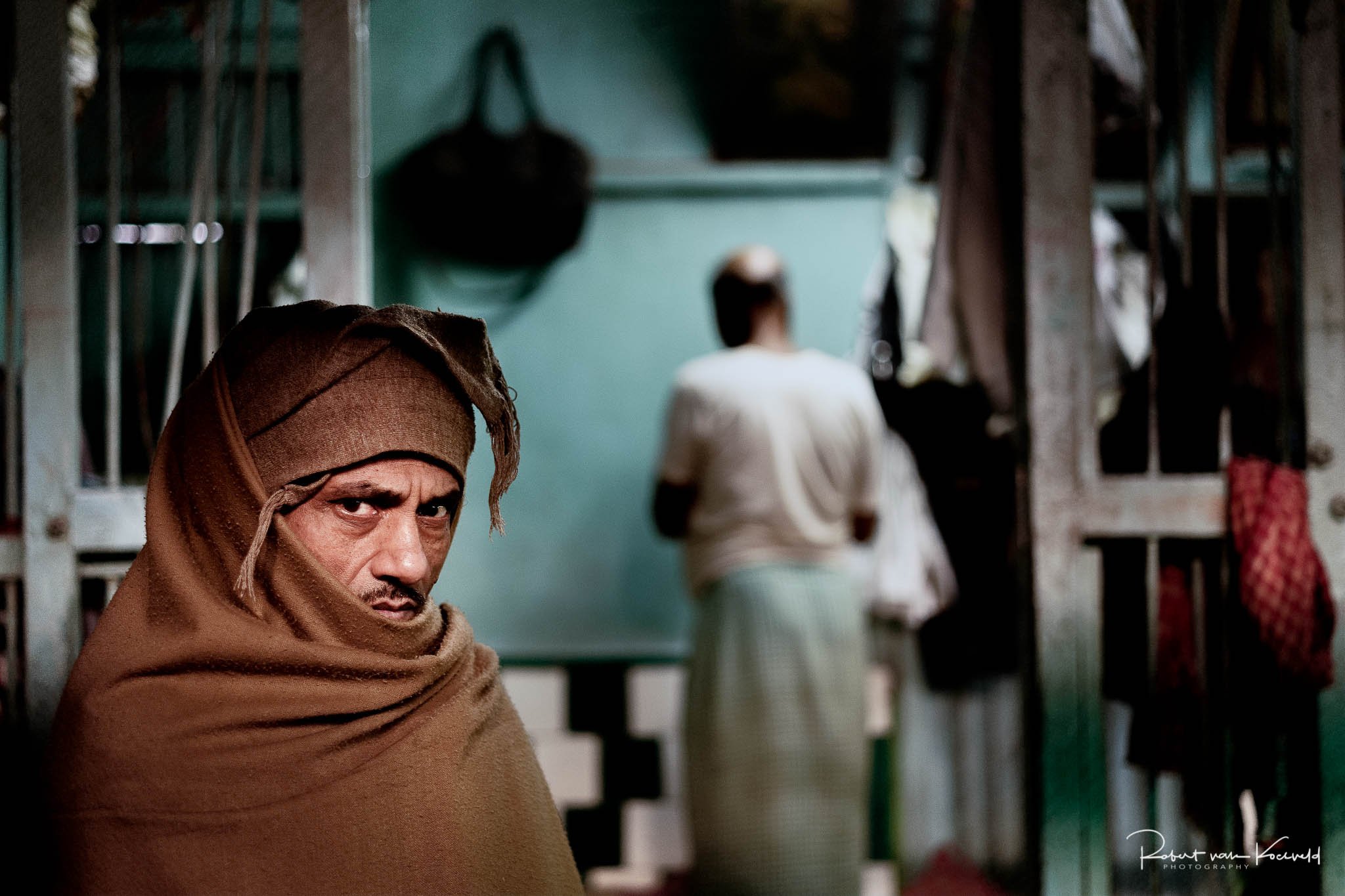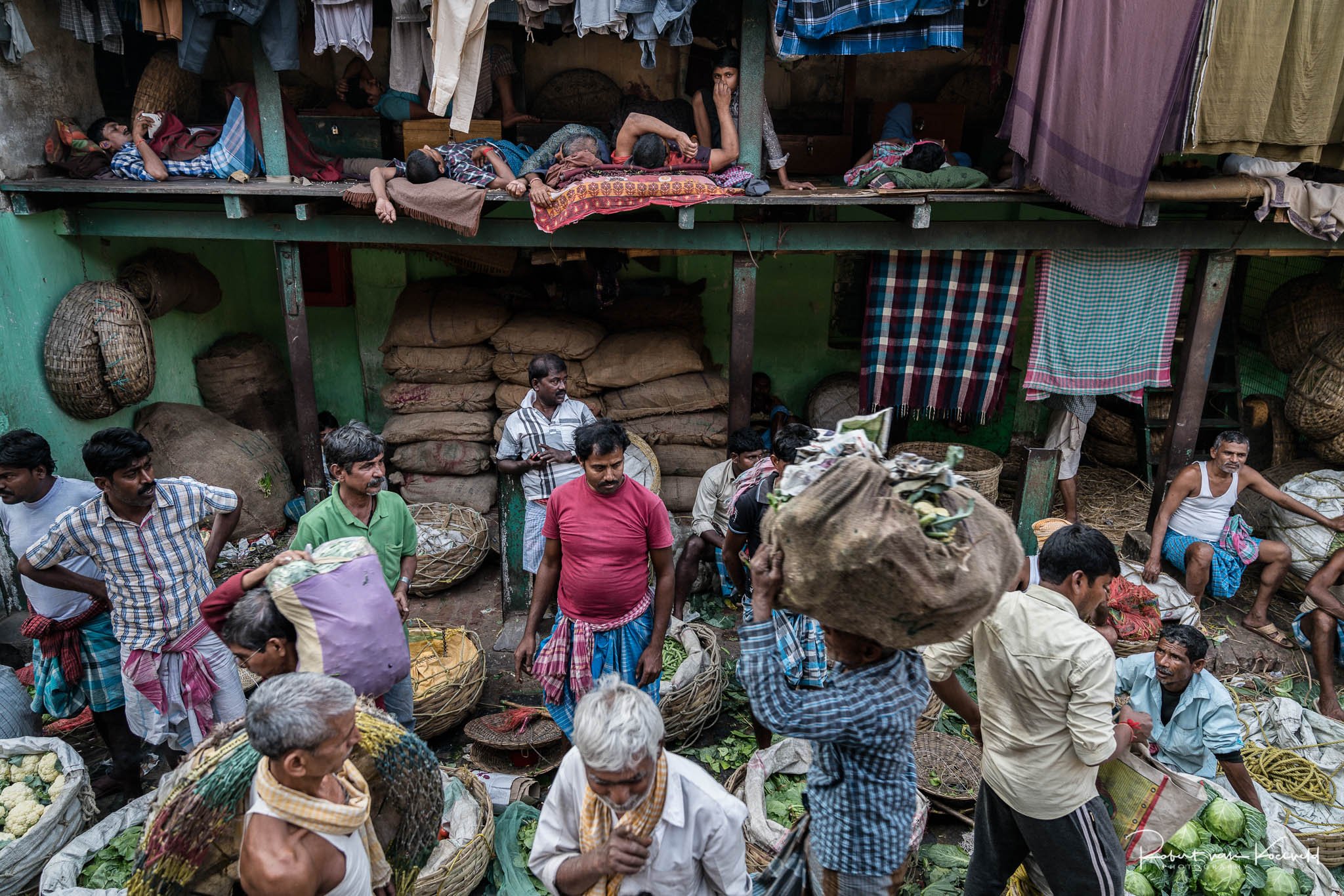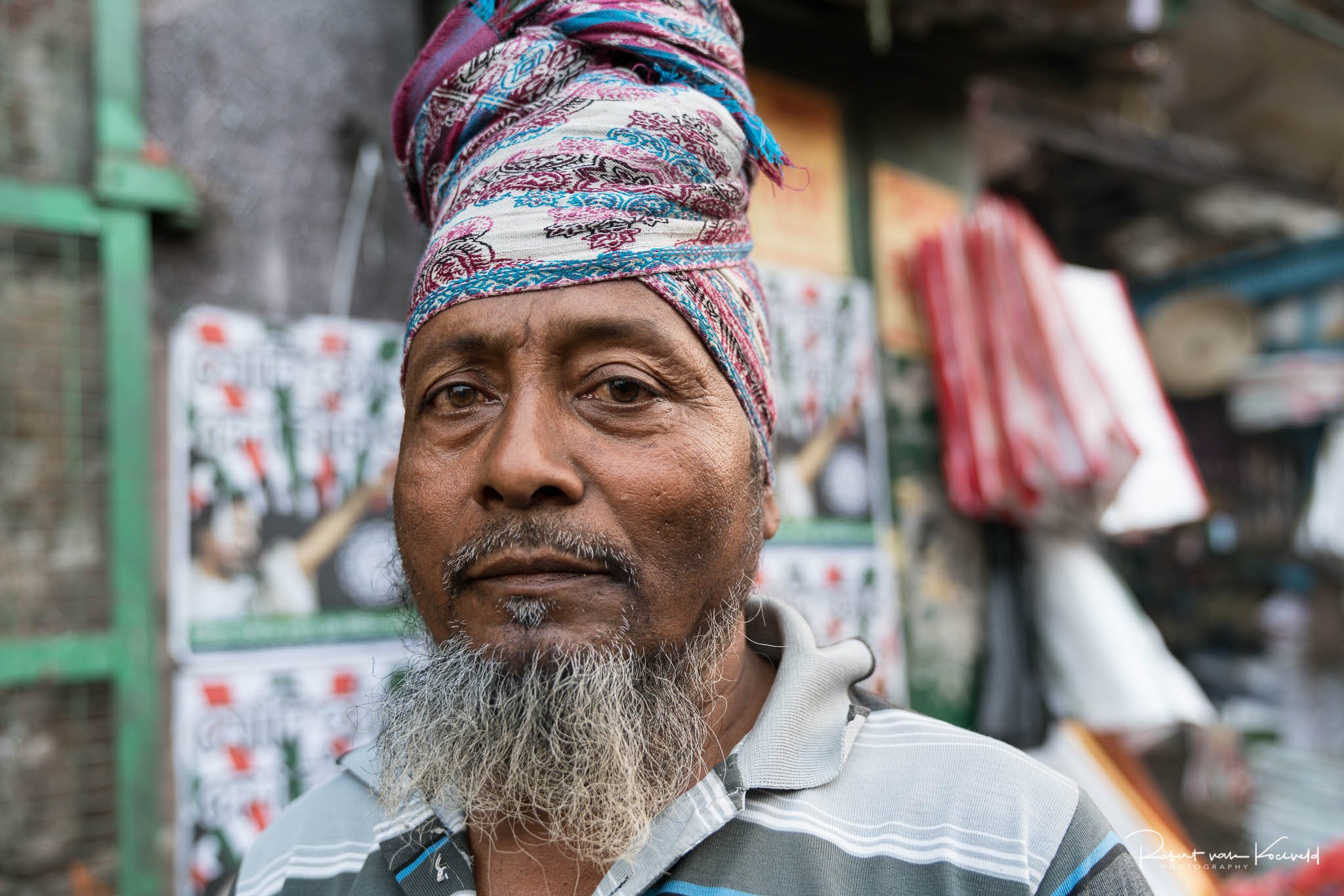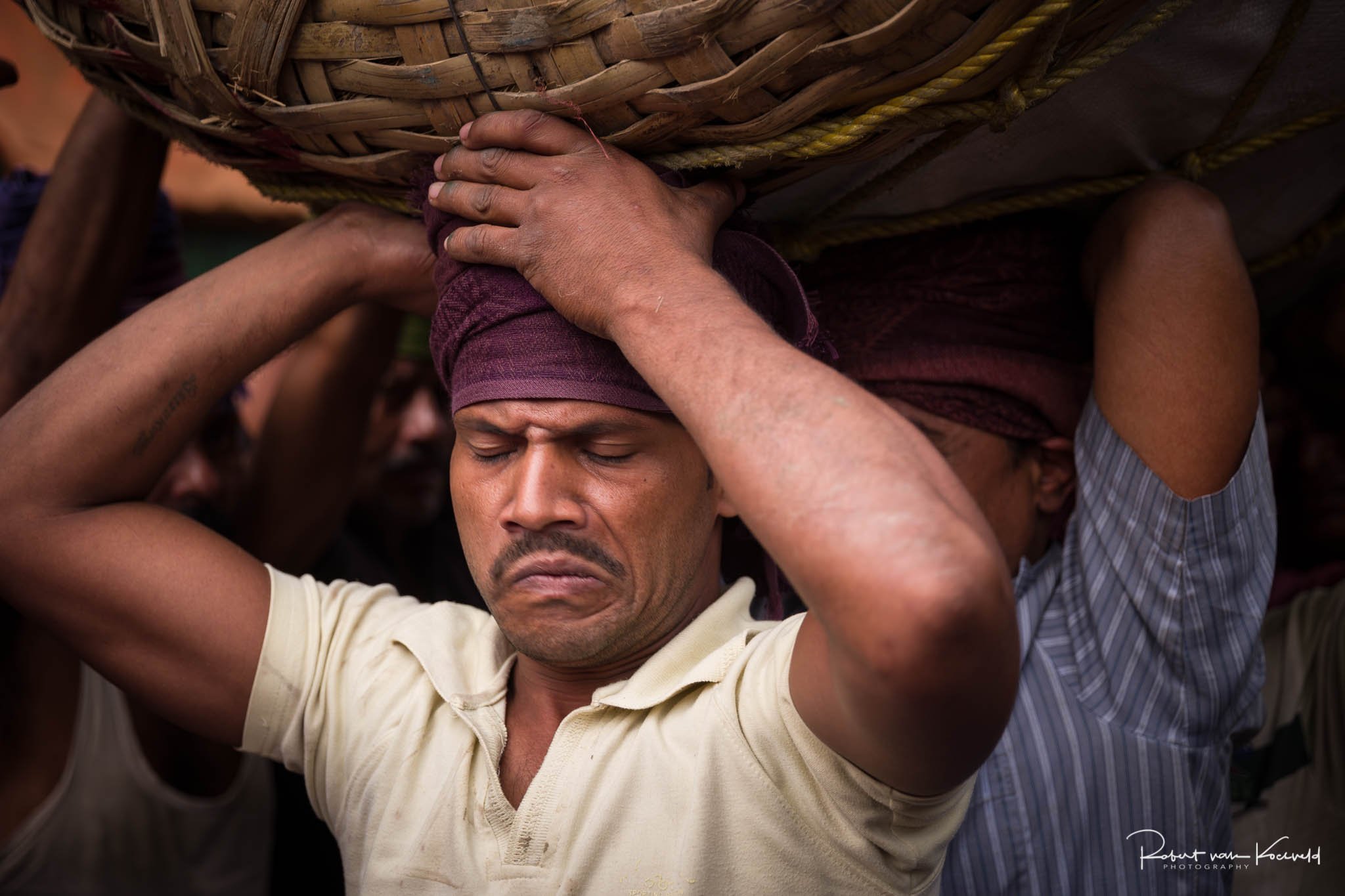Feeding Kolkata
If you want to explore the Kolkata market at it's busiest time, you leave well before dawn and travel on unusually quiet streets. It would be a calm journey if not for the fact that road rules do not apply at that hour and so your taxi driver constantly goes through red lights. He will be reluctant to take you right to the main gate since that's where traffic is heaviest, and so you will be dropped somewhere beyond that chaos and walk the rest of the way.
The anticipation builds as your pace changes, weaving between trucks and barrows, alongside more and more people. Then you tunnel through the main entrance to emerge in what seems like another world – intense, busy, more than busy. Everywhere people jostle and wind their way through mountains of produce. If you go with my friend Manjit from Calcutta Photo Tours he will have already told you: 'This is a working market. The loads are very heavy and you need to notice when you need to jump out of the way'. If you are in their way, the porters may push you aside; they have priority and it's a matter of safety. You search for tiny backwaters as the river of people surges around you.
The market has a strange and beautiful patchwork of lighting. Natural light fights with a variety of warm and cold electric lights. Pools of coloured light illuminate the produce: red to give the carrots a healthy glow and green to make those beans more snappy.
Money changes hands rapidly inside the market, but not before some determined bargaining complete with dismissive looks, contemptuously rejecting gestures and a lot of good natured play.
Slideshow: the busy morning market
I have been to this market many times now, fitting in at least a couple of visits each time I come to this wonderful city. The market has it's own rhythm and if you stay you will suddenly experience the early morning mayhem being replaced by a much calmer, almost gentler pace.
Now people can enjoy a cup of tea and, because it's India, read their papers. Everybody reads the papers in India. In fact the market is like a small town with it's own barbershops and supply shops. There are offices with money being counted and cashbooks kept up to date. Up there above the alleys people are living and sleeping. Now there is time and space for the sweepers to come through and magically (and briefly) make things neat again. Now too, there is time for prayer and pujas are made to little shrines in small offices.
Slideshow: Eventually they have time for chats, laughs and portraits.
Talik Rai has been working at the markets for more than 15 years. He operates one of the scales used to weigh produce as it is bought and sold.
Behind the scenes are the managers and accountants. It looks like it's been a productive day already, with balanced books, and happy customers and staff.
Nothing is wasted and the community is strengthened. She is pleased to be able to regularly supplement her firewood supply at home by collecting off-cuts from the carpenters workshop.
Many of the vegetables are delivered in huge roped packages that weigh up to 500 kilograms. Yes that's right 500 kilograms! In a world where strength and team work are the only way of managing occupational health and safety, it is the Front Gate Porter Wallahs who manage these incredible loads. Sometimes they are able to take up their loads straight from the waiting trucks. Other times it is a matter of lifting the 500 kg from ground level. It is astounding to watch up to a dozen men dramatically elevate the load, inching the weight higher by degree, using their whole body as a kind of angled prop, the whole group careening around as they struggle under it's weight. Then a single heroic person dives underneath to lift it the final distance using their own head. And yes, they do sometimes drop them and yes people do get hurt. Then, with the behemoth above and on their heads, the porter wallahs weave briskly through the narrow spaces between stalls before the weight is dropped with a huge ‘whumf’ sound onto stacked tires laid down seconds before to protect their contents.
Slideshow: the porters skill and strength
I spoke with Abdul Wahib (58) who has been working in the market for 42 years as a Front Gate Porter. His family lives in Joysagur around 42 kms from the city and he commutes every two days, working only every second day now. Regularly lifting these heavy weights requires a high protein diet and he appreciates being able to access that more cheaply back in the village.
Like other porters it took a few years of general porter work before he was accepted into his team of 21 men. The group work the afternoon shift and take turns with the lifting and the delivering. It takes a dozen or more to lift but delivery takes only four or five porters, once the load is carefully centred and balanced above them. After the market owners are paid their fees, the income from each trip is equally distributed at the end of the shift. The income is substantial by Indian standards but certainly well earned. Vacancies are rare and children of existing members are given priority. The team has a strong sense of camaraderie and play.
Abdul lost most of the sight in one eye after he was hit by a thrown stone while on his commuter train journey. He needs further treatment but can’t really afford the time off. He told me he hopes to work a few more years yet.
Our mind can find a wonderful sense of choreographed order amidst apparent chaos. Pattern, repetition, colour can become pure beauty. Even more memorable and powerful is the dignity of people working hard to feed their families and to feed Kolkata.
Note for photographers: This market is a workplace not a tourist site. Be respectful and stay out of the way. Wear solid shoes and if visiting the nearby fish market be prepared to smell it for a few days. Many guides will be reluctant to go here because of the risks to visitors.
By far the best option is to go with Manjit from Calcutta Photo Tours. http://calcuttaphototours.com/



































